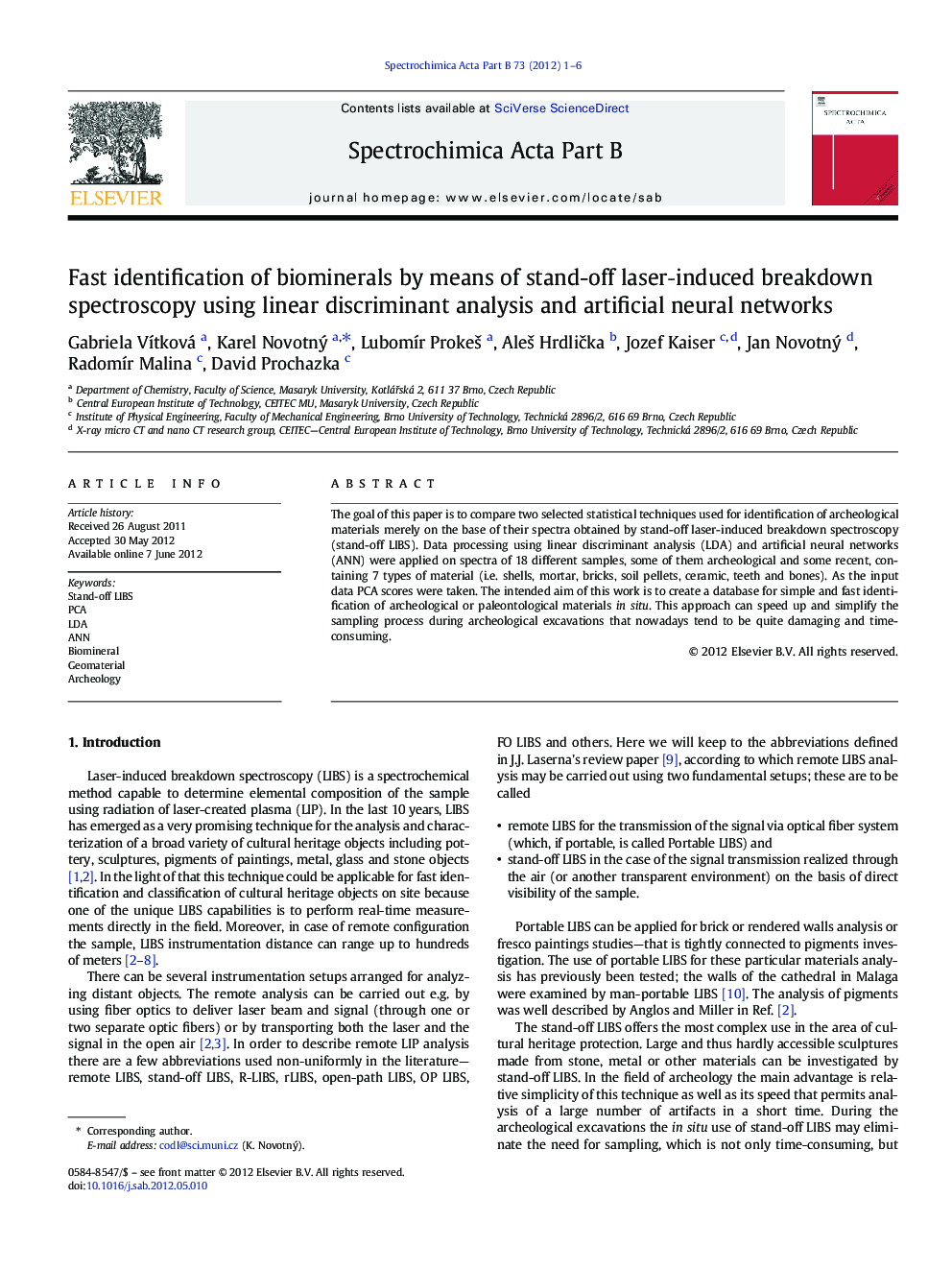| Article ID | Journal | Published Year | Pages | File Type |
|---|---|---|---|---|
| 1240035 | Spectrochimica Acta Part B: Atomic Spectroscopy | 2012 | 6 Pages |
The goal of this paper is to compare two selected statistical techniques used for identification of archeological materials merely on the base of their spectra obtained by stand-off laser-induced breakdown spectroscopy (stand-off LIBS). Data processing using linear discriminant analysis (LDA) and artificial neural networks (ANN) were applied on spectra of 18 different samples, some of them archeological and some recent, containing 7 types of material (i.e. shells, mortar, bricks, soil pellets, ceramic, teeth and bones). As the input data PCA scores were taken. The intended aim of this work is to create a database for simple and fast identification of archeological or paleontological materials in situ. This approach can speed up and simplify the sampling process during archeological excavations that nowadays tend to be quite damaging and time-consuming.
► We use statistical techniques for identification of archeological materials. ► Input data for LDA and ANN are PC scores counted from stand-off LIBS spectra. ► The method used for identification of archeological materials provides good results. ► After recording more spectra we can get useful tool for rapid analysis in situ.
